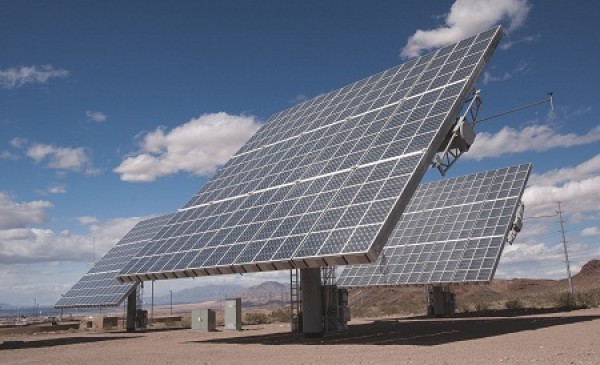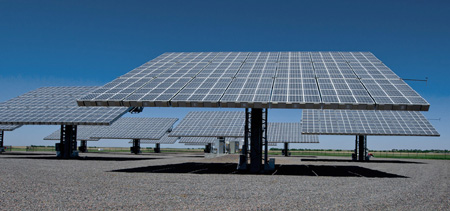The politically hot issue of failing federally backed solar power companies took a decidedly bipartisan turn this week with the reported closure of Amonix Solar, a Las Vegas company that received a big federal grant from the Bush administration and was backed by heavyweight Democratic and Republican politicians in Nevada.
Amonix made systems based on concentrating photovoltaics, a super-efficient but more expensive technology than either thin-film or crystalline silicon PV that has struggled to gain a foothold. The company received a $5.9 million clean energy manufacturing tax credit to help build a North Las Vegas factory, as well as an R&D grant announced at $14.8 million from the U.S. Department of Energy in 2007 as part of President George W. Bush’s Solar America Initiative.

Politco reported on Thursday that Amonix ultimately received $15.6 million under the three-year grant program, and that “$8.2 million was disbursed under the Bush administration and $7.4 million was handed out under Obama, according to the Energy Department.” In addition, the Associated Press, citing an Amonix spokeswoman, reported late Thursday that the company did not use the $5.9 million tax credit because it never had taxable income.
The company’s demise was reported first in the Las Vegas Review-Journal. The paper said Amonix “began selling equipment, from automated tooling systems to robotic welding cells, in an online auction Wednesday.” The paper cited workers who said they had been laid off and the plant had actually stopped production way back on May 1.
Amid a tumultuous time in the solar power manufacturing industry, Seal Beach, Calif.-based Amonix joins a growing list of companies to go under – including several backed by the U.S. government. Amonix is a departure, however, in that it wasn’t backed under the Obama administration’s federal loan-guarantee program – although the company does share a link to that program.
Amonix systems are the basis for the Alamosa Solar Generating plant in Colorado, which opened in May after receiving a $90.6 million federal loan guarantee through the 2009 stimulus-funded Section 1705 program. That’s the same program that funded the failed solar manufacturers Solyndra and Abound Solar, whose high-profile bankruptcies, seized on by Republicans, have created the impression of a program in disarray, despite an independent analyst’s report earlier this year that the loan-guarantee portfolio “holds less than the amount of risk envisioned by Congress when it created and funded the program.”
Greentech Media reported it has “heard unconfirmed reports” that the Amonix 7700 trackers at the Alamosa plant, owned by Goldman Sachs subsidiary Cogentrix, “are stowed and not operating due to quality issues in manufacturing.” If that’s the case, the Amonix failure might be a precursor to more bad PR for the loan guarantee program, but for now it’s a mess tarnishing both parties.
While the company was backed primarily under a Bush administration program, Senate Majority Leader Harry Reid was also a big advocate. Reid responded to the Review-Journal’s report that the company had gone under with an email statement that partly attributed the closure to the death last year in a plane crash of Amonix CEO Brian Robertson.

“Unfortunately the company was unable to recover from this difficult time,” Reid said. “Some people will be tempted to use today’s unfortunate news for political gain. But I am hopeful that the bipartisan support for this project and the public-private partnership that helped make this and many other projects possible will not be degraded by dirty energy supporters for their own profit or political gain. The clean energy sector is too important to Nevada’s future, and I hope that those that publicly acknowledge this will continue to strengthen the bipartisan support for renewable energy programs and incentives that exists in Nevada.”
DOE spokesman Jen Stutsman took a similar line in an email to Bloomberg News: “The global solar industry is facing significant challenges. While today’s news is disappointing, the United States simply can’t afford to cede America’s role in the growing, highly competitive solar energy industry.”